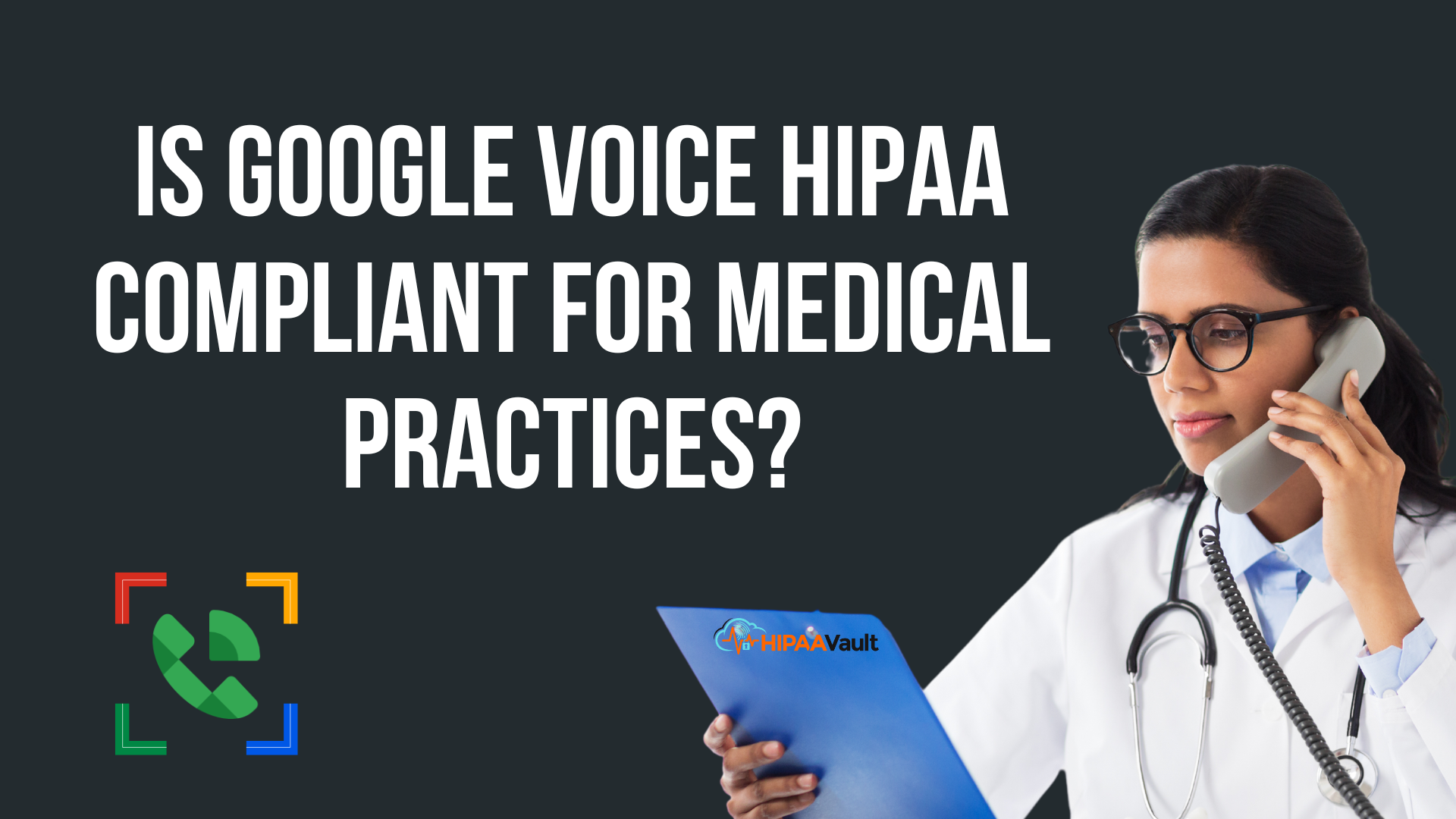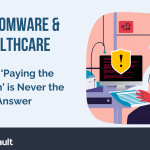
Effective communication is paramount for delivering quality patient care. Medical practices are increasingly adopting digital tools to enhance their operations, and need to ensure that those tools comply with regulatory standards.
One such tool is Google Voice, a cloud-based telephone service that offers a range of features including call forwarding, voicemail transcription, and text messaging. However, for healthcare providers, the question arises: Is Google Voice HIPAA compliant?
The Health Insurance Portability and Accountability Act (HIPAA) sets strict guidelines to protect patient information, particularly when it comes to electronic communications. Compliance with HIPAA is not just a legal requirement; it is a critical aspect of maintaining patient trust and safeguarding sensitive health information.
This blog will explore the intersection of Google Voice and HIPAA compliance, providing insights into how medical practices can utilize this tool while adhering to necessary regulations. We will discuss what HIPAA entails, examine the features of Google Voice, evaluate its compliance status, and highlight the advantages and potential risks associated with its use in healthcare settings.
Understanding HIPAA Compliance
What is HIPAA?
The Health Insurance Portability and Accountability Act, commonly known as HIPAA, is a landmark piece of legislation enacted in 1996 to address a wide range of healthcare concerns in the United States. While HIPAA’s scope is broad, one of its most significant aspects is the protection of sensitive patient health information. This is particularly crucial in our increasingly digital world, where patient data is often stored, transmitted, and accessed electronically.
HIPAA consists of several rules, but the ones most relevant to our discussion of Google Voice in medical practices are the Privacy Rule and the Security Rule. The Privacy Rule establishes national standards for the protection of individuals’ medical records and other personal health information, setting limits on the use and disclosure of such information. The Security Rule complements this by specifying safeguards that covered entities and their business associates must implement to protect the confidentiality, integrity, and availability of electronic protected health information (ePHI).
Key requirements for HIPAA compliance in digital communications
When it comes to digital communications in healthcare, HIPAA compliance involves several key requirements that medical practices must adhere to:
- Secure Transmission: Any electronic communication containing Protected Health Information (PHI) must be encrypted during transmission. This applies to emails, text messages, voice calls, and any other form of digital communication.
- Access Controls: Healthcare providers must implement strict access controls to ensure that only authorized personnel can access PHI. This includes unique user identification, automatic logoff, and encryption and decryption mechanisms.
- Audit Controls: HIPAA requires the implementation of hardware, software, and/or procedural mechanisms to record and examine activity in information systems containing or using PHI.
- Integrity Controls: Measures must be in place to ensure that ePHI is not improperly altered or destroyed. This includes electronic mechanisms to confirm that ePHI has not been tampered with or changed in an unauthorized manner.
- Business Associate Agreements (BAAs): If a healthcare provider uses a third-party service that may come into contact with PHI, a BAA must be in place. This agreement ensures that the business associate will appropriately safeguard the PHI.
- Risk Analysis and Management: Regular risk assessments must be conducted to identify potential vulnerabilities in the handling of PHI, and appropriate measures must be taken to address these risks.
- Training: All staff members who may come into contact with PHI must receive regular training on HIPAA compliance and the organization’s privacy and security policies.
Google Voice: An Overview
Features and benefits of Google Voice
For medical practices considering Google Voice, it’s essential to understand its key features and potential benefits:
- Virtual Phone Number: Google Voice provides users with a single virtual phone number that can route calls to multiple devices. This allows healthcare professionals to manage both personal and work-related calls efficiently.
- Call Forwarding: Calls to the Google Voice number can be forwarded to any phone, including office landlines, mobile phones, or other devices. This flexibility ensures that important calls are never missed, even when staff are away from their primary work location.
- Voicemail Transcription: One of Google Voice’s standout features is its ability to transcribe voicemails into text. This can be particularly useful in a medical setting where quick access to message content without having to listen to audio can save valuable time.
- Text Messaging: Google Voice supports SMS messaging, allowing practices to send and receive text messages through the service. This can be a convenient way to send appointment reminders or brief, non-urgent communications to patients.
- Call Screening: Users can screen calls before answering, hearing the caller’s name and having the option to listen in as they leave a message. This feature can help prioritize urgent patient calls and manage time more effectively.
- Custom Greetings: Different voicemail greetings can be set up for different callers or groups, allowing for personalized messaging for patients, colleagues, or other contacts.
- Call Recording: Google Voice offers the ability to record calls, which can be useful for training purposes or for maintaining accurate records of important conversations. However, it’s crucial to note that using this feature in a healthcare setting requires careful consideration of HIPAA regulations and patient consent.
- Integration with Google Workspace: For practices already using Google Workspace and HIPAA Gmail, Google Voice integrates seamlessly with other Google tools, potentially streamlining workflows and improving overall efficiency.
How medical practices can use Google Voice
Medical practices can leverage Google Voice in several ways to enhance their communication systems:
- Centralized Communication: By using a single Google Voice number for the practice, all incoming calls can be managed centrally and directed to the appropriate staff member or department.
- After-Hours Support: Call forwarding can be used to route after-hours calls to on-call staff, ensuring that urgent patient needs are addressed even outside of regular office hours.
- Efficient Message Management: The voicemail transcription feature allows staff to quickly scan messages and prioritize responses, potentially improving response times for patient inquiries.
- Appointment Reminders: The SMS functionality can be used to send automated appointment reminders to patients, potentially reducing no-shows and improving schedule adherence.
- Remote Work Support: As healthcare increasingly embraces telemedicine and remote work options, Google Voice can provide a flexible solution for staff to manage calls and messages from various locations.
HIPAA Compliance and Google Voice
Is Google Voice HIPAA compliant?
The question of whether Google Voice is HIPAA compliant is not straightforward and requires careful consideration. At its core, Google Voice, like any communication tool, is not inherently HIPAA compliant or non-compliant. Rather, its compliance status depends on how it is implemented and used within a healthcare setting.
Google, as a company, has the capability to support HIPAA compliance for some of its products. However, it’s crucial to note that not all Google services are covered under this provision. As of 2024, Google Voice is included in the list of Google Workspace services that can be HIPAA compliant, but only under specific circumstances:
- Business Associate Agreement (BAA): Google Voice can only be considered HIPAA compliant if it is covered by a BAA. This is a critical distinction, as consumer versions of Google Voice are not eligible for a BAA and therefore cannot be used in a HIPAA-compliant manner for handling Protected Health Information (PHI).
- Google Workspace License: HIPAA compliance is only available for Google Voice when it’s part of specific Google Workspace editions, typically the enterprise-level plans. Medical practices must ensure they have the correct subscription level to access HIPAA-compliant features.
- Proper Configuration: Even with a BAA in place, Google Voice must be properly configured to ensure HIPAA compliance. This includes setting up appropriate access controls, enabling necessary security features, and training staff on proper use.
- Limited Scope: It’s important to understand that while Google can support HIPAA compliance, they are not responsible for the overall HIPAA compliance of a medical practice. The healthcare provider remains responsible for using the tool in a compliant manner and implementing all necessary safeguards.
Google Voice Business Associate Agreement (BAA)
A Business Associate Agreement is a critical component of HIPAA compliance when using third-party services like Google Voice. This legal contract establishes the responsibilities of the business associate (the service provider) in protecting PHI.
Key points about BAAs for Google Voice include:
- Coverage: The BAA covers Google Voice as part of Google Workspace, but only for eligible subscription levels.
- Responsibilities: The BAA outlines the Business Associate’s responsibilities in protecting PHI, including maintaining appropriate safeguards and reporting any unauthorized use or disclosure of PHI.
- Limitations: The BAA does not transfer the overall responsibility for HIPAA compliance to the Business Associate. Healthcare providers must still ensure their own practices and use of the tool comply with HIPAA regulations.
- Activation: The BAA must be actively accepted by an administrator of the Business Associate account. It is not automatically in effect simply by subscribing to an eligible plan.
Differences between consumer and business versions of Google Voice
Understanding the distinction between consumer and business versions of Google Voice is crucial for healthcare providers:
- Consumer Google Voice:
- Not eligible for a BAA
- Cannot be used in a HIPAA-compliant manner for handling PHI
- Lacks certain security features necessary for HIPAA compliance
- Business Google Voice (part of HIPAA Google Workspace Plan):
- Eligible for a BAA (with appropriate subscription level)
- Can be configured for HIPAA-compliant use
- Offers additional security features and administrative controls
Medical practices must ensure they are using the business version of Google Voice, covered under a Google Workspace subscription with an active BAA, to maintain HIPAA compliance. Using the consumer version for any communication involving PHI would be a violation of HIPAA regulations and could result in significant penalties.
While Google Voice can be HIPAA compliant under specific circumstances, healthcare providers must be diligent in ensuring they have the correct version, appropriate agreements, and proper implementation to maintain compliance.
Using HIPAA Compliant Google Voice
When properly implemented and used, HIPAA compliant Google Voice can offer several significant advantages for medical practices. These benefits span across operational efficiency, patient communication, and integration with existing systems.
Cost-effectiveness Advantages
- Reduced Hardware Costs: Google Voice operates as a cloud-based service, eliminating the need for expensive on-premises phone systems. This can result in significant savings on hardware, maintenance, and upgrades.
- Scalability: As a cloud solution, Google Voice can easily scale with the growth of a medical practice without requiring substantial additional investment in infrastructure.
- Bundled Services: When part of a Google Workspace subscription, Google Voice is integrated with other productivity tools, potentially reducing overall IT costs by consolidating multiple services under one provider.
- Predictable Pricing: Google Workspace, including Google Voice, typically operates on a per-user, per-month pricing model, allowing for more predictable budgeting of communication costs.
Security Considerations
- Data Breaches: Although Google has robust security measures, no system is entirely immune to data breaches. A breach could potentially expose sensitive patient information, leading to HIPAA violations and loss of patient trust.
- Unauthorized Access: If Google Voice accounts are not properly secured with strong passwords and two-factor authentication, there’s a risk of unauthorized access to patient communications.
- Misconfigurations: Improper setup of Google Voice settings could lead to unintended sharing of patient information. For instance, if call forwarding is misconfigured, calls containing PHI might be routed to non-secure lines.
- Employee Misuse: There’s always a risk that employees might misuse the system, intentionally or unintentionally, leading to HIPAA violations. This could include accessing patient information from unsecured devices or sharing login credentials.
- Third-Party Integrations: While Google Voice itself may be HIPAA-compliant when properly configured, integrating it with other third-party tools that aren’t covered under a BAA could create compliance risks.
- Mobile Device Risks: If Google Voice is accessed on mobile devices, lost or stolen devices could potentially lead to unauthorized access to patient information.
It’s important to note that these risks can be mitigated by using a Managed Service Provider (MSP). MSPs manage the HIPAA-compliance aspects, as well as the cyber security, for healthcare organizations that want to keep their focus directed on their patients.
HIPAA Vault is a MSP with over 25 years of experience in HIPAA-compliance. For more information on how HIPAA Vault can make your Google Voice compliant, contact us today!




